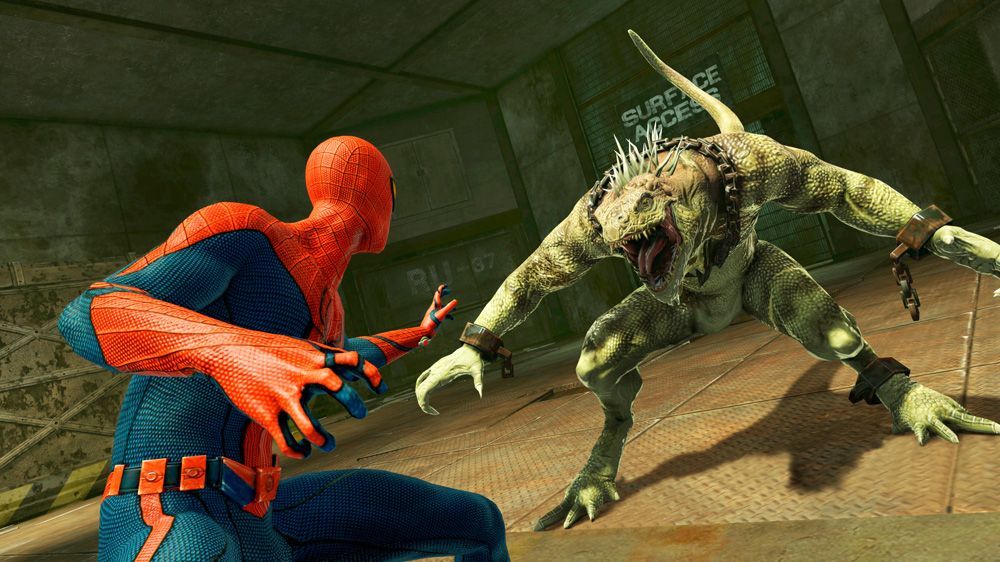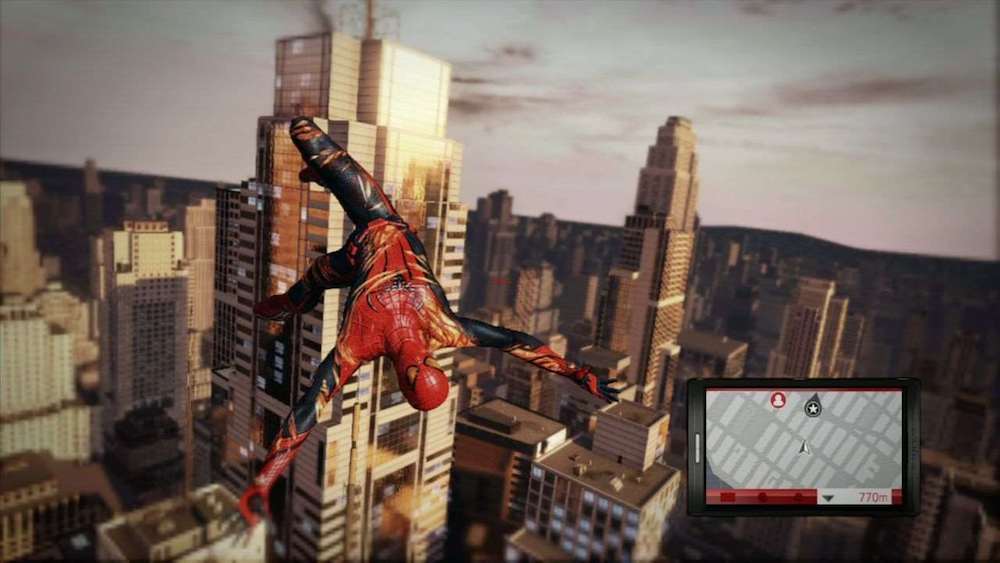
Superhero games are a fickle thing. We get spoilt one moment with the Arkham series and betrayed the next by lazy movie tie-ins like Green Lantern and Thor: God of Thunder. Spider-Man, in particular, has been thrown around quite a bit. The likes of Spider-Man 2, Shattered Dimensions and Web of Shadows are good examples of what a great Spider-Man game can be, but other titles haven’t achieved the same feat. The Amazing Spider-Man looked to be a decent tie-in game, but there’s always the chance of it being a quick cash-grab. I remember looking forward to it back when it came out, but playing it now, I don’t quite understand why I was keen for it way back when.

Unlike other movie tie-ins, The Amazing Spider-Man is set after the events of the film. After Gwen Stacey sneaks Peter Parker into a restricted Oscorp facility, they discover cross-species experiments are still taking place under the new head of Oscorp, Alistair Smythe. After the cross-species break out of their confines due to Peter also being a cross-species, they escape into the city, carrying with them a deadly virus that threatens the lives of those in New York City.
If it sounds cliche, one-note, and half-assed, that’s because it is. Smythe is probably one of the most stereotypical villains I’ve seen in a video game; he’s uninteresting, boring, poorly motivated, and a sorry excuse for what could’ve been. Props to Beenox for creating a new villain, but it’s hard not to feel like they would’ve been better off using someone more iconic from the source material. While the writing and voice acting isn’t bad, neither do a good enough job in translating the high stakes the plot tries to establish, leaving it as an underwhelming mess that’s worth skipping.

Web-slinging is arguably the most important thing to nail when it comes to making a Spider-Man game, and for the most part, Beenox has done a great job. Exploring New York City is the most exhilarating it’s been in a Spider-Man game. The camera pulls in close to Spidey as he flings from building to building at breakneck speeds, and it feels great. The ability to wall-run and utilise Spider-Senses to effortlessly traverse to specific areas all feel natural, despite the awkward occasion where a web seemingly connects to nothing.
Unfortunately, the same praise can’t be given to the combat. So many games try to adopt Arkham’s excellent combat system but fail to include what makes it so great to begin with. Spidey can attack, counter, and fire of rapid web shots when needed against specific enemy types. However, the lack of gadgets and additional combat options quickly leads to it feeling repetitive and dull, despite how flashy it is. Upgrades feel pointless, too, because they don’t allow you to do new things, only improve existing skills. It’s lazy and lacking any depth you’d find in the Arkham titles.

The same can be said for the story missions and open world activities. Main missions usually involve Spidey going to an area, fighting some bad guys, justifying its relevance to the plot, and a consistent rinse and repeat from there. None of the missions stood out to me, and nor did the boss fights. They’ll rarely employ new mechanics, and even when they do, they’re simple to figure out, and nothing that hasn’t been done in a video game before. Open world activities are the worst offender by far. There’s a total of four different mission types that can be found all over the city. They boil down to either a stealth section, some combat, photo opportunities, or delivering escaped mental patients back to their asylum. It’s a shameless amount of copy and paste, with no incentive to complete them besides extra costumes.
For the most part, The Amazing Spider-Man is a good looking game for its time. Spidey, in particular, is very detailed, but the same can’t be said for his human counterparts. Close up shots of Gwen and Connors are not pretty, and strongly emphasise the idea that the game looks much better in motion. When you’re slinging through the city or smacking some bad dudes around, the game looks and runs excellently. However, steady frame-rates and nice visuals didn’t hold the Amazing Spider-Man back from crashing on me from time to time. Across my 11 hour playthrough of the game, I had it crash on me four times. I didn’t lose any of my progress, but it’s frustrating nonetheless when you have to boot the game up again. I also noticed that the frame-rate tanked quite heavily with multiple enemies on the screen, which made dealing with them frustrating.

The Amazing Spider-Man reeks of rushed development to meet a desired release date. The web-slinging is fantastic, some of the best Spidey has seen in video game format, but that’s all it does properly. The simplicity of its combat and narrative hold it back from being a truly great Spider-Man game. There’s solid a foundation here for something great and given more time I’m sure it could’ve been the Spider-Man game we all so desperately wanted, but it suffers from its own repetition and simplicity, making for an experience that only the most die-hard Spider-Man fans can get a kick out of. Unfortunately, The Amazing Spider-Man isn’t so amazing after all.











